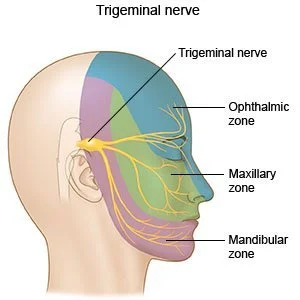Trigeminal neuralgia case study: Microbiome imbalance
By Yu Ying
Edited by Andrew Miles
Pain in the Trigeminal Nerve Area: A Story of Hope and Healing
Trigeminal neuralgia is a painful condition that often affects older adults, causing intense, recurring pain in the face. This pain can be so sharp and severe that it feels like being cut by a knife or burned by fire. The pain comes and goes, and when it returns, it often comes back even worse. It can disrupt daily life and cause extreme discomfort.
Mr. Jiang, an elderly man and the village head of a small village in Malacca, suffered from trigeminal neuralgia. Three years ago, he began feeling severe pain on the right side of his face. He tried some painkillers from the pharmacy, but they only worked for a short time, and soon the pain returned, even stronger than before. Sometimes, the pain was so bad he wanted to bang his head against the wall. The pain would flare up when he was tired, angry, or touched certain parts of his face.
After three long years of searching for a cure, Mr. Jiang finally came to us with help from the Special Assistant to the Chief Minister of Malacca. We carefully examined him and found that he had an imbalance of damp-heat in his body. His pulse was slippery and rapid, and his tongue coating was thick, yellow, and greasy. He often ate hot, rich foods like durian, Bak Kut Teh, curry chicken, and chili peppers, which worsened his condition. In addition, working in the rain and wind weakened his body, and combined with his poor diet, his spleen was unable to properly transform and transport fluids, leading to an accumulation of damp-heat. This caused internal fire and liver fire to flare up, blocking the clear orifices and leading to the severe trigeminal neuralgia.
To treat Mr. Jiang, we used acupuncture and herbs. For acupuncture, we focused on specific points to relieve the pain and balance his energy:
Ashi points (specific points of tenderness on his face)
ST 36 (Zusanli): This point is known for its ability to boost energy and treat many conditions, including pain.
LI 4 (Hegu): A common point used to relieve facial pain and tension.
SJ 5 (Waiguan): A point used to help release external wind and clear blockages, which is crucial for conditions like trigeminal neuralgia.
For internal medicine, we prescribed a modified Sanhuang Decoction, which included the following herbs:
Huanglian (Coptis root): Clears heat and toxins from the body.
Huangqin (Scutellaria root): Clears heat and resolves dampness.
Huangbai (Phellodendron bark): Drains damp-heat and cools fire.
Yinchen (Artemisia): Clears heat and damp-heat.
Cangzhu (Atractylodes): Strengthens the spleen and resolves dampness.
Gua Lou Ren (Trichosanthes seeds): Clears heat, relieves pain, and helps with internal blockage.
Dazao (Jujube): Tonifies the spleen and harmonizes the other herbs.
Gancao (Licorice): Harmonizes and enhances the effects of other herbs.
We also advised him to switch to a lighter diet to support his recovery. We scheduled a follow-up visit in a week.
At first, Mr. Jiang didn’t come back, and we were concerned. But a month later, his assistant visited with incredible news: after just three days of taking our prescribed herbs, Mr. Jiang’s trigeminal neuralgia was completely gone!
Mr. Jiang was overjoyed and invited us to his village for a big celebration. He wanted us to give a lecture on health and wellness, and offer free consultations to his fellow villagers. When we visited, Mr. Jiang looked healthier and happier than ever. He introduced us to everyone in his village, where we provided a lecture on wellness, offered free consultations, and even treated villagers with acupuncture.
For us as doctors, the greatest reward is seeing our patients recover. We don’t seek lavish rewards. Traditional Chinese Medicine (TCM) and acupuncture can do remarkable things, and we’re grateful to have helped Mr. Jiang regain his health and quality of life.
— Mengxi, 2019, “Reflections from the Heart of Medical Practice”
